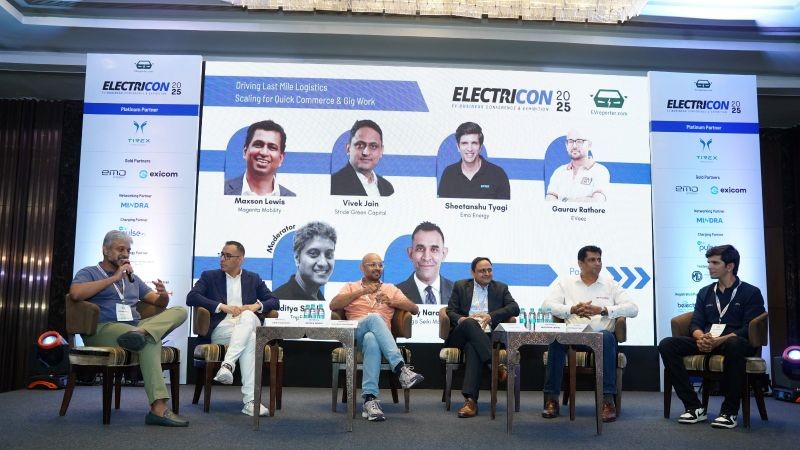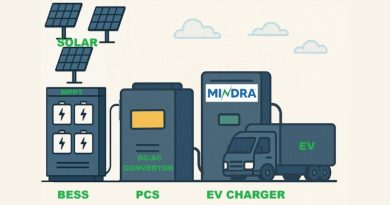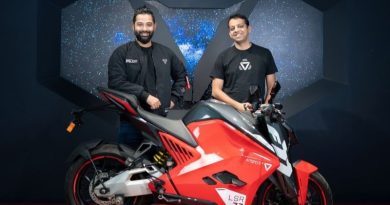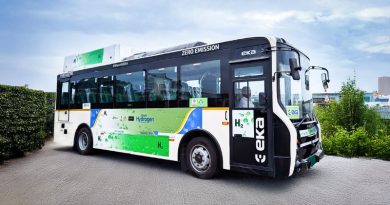Driving Last-Mile Logistics with Electric Vehicles in India | Stakeholder Discussion
During Electricon 2025 in Delhi, Aditya Singh (Co-founder and CEO at TapFin) steered a candid exchange among industry leaders, including Maxson Lewis, Vivek Jain, Sheetanshu Tyagi, Gaurav Rathore and Uday Narang.
This is a recap of the insights shared by each stakeholder:
Uday Narang – Founder, Omega Seiki Mobility (OEM)
A Wall Street banker who moved to India, determined to make a change in India’s air quality. Key points made:
- India buys on Total Cost of Ownership (TCO), not green sentiment. Customers choose EVs only when the TCO beats ICE.
- Form factor squeeze in cargo space – Small quick commerce parcels now go on 2Ws; while bigger parcels are moving to 1-ton LCVs, leaving cargo 3Ws stuck in the middle. The 3W cargo segment faces a temporary “sandwich” squeeze but will rebound once DCO (driver-cum-owner) finance confidence returns.
- On the passenger e-3W side, however, things are looking promising, and TCO works beautifully.
- Recommendation for EV start-ups: EV business is easy to enter, hard to exit—play at your own risk. Focus on long-term viability, not vanity metrics. Only 5-6 OEMs will survive – winners must offer reliable service, spare parts and buy-back plans. Companies that can guarantee minimal downtime in Tier 2/3 towns and rural hubs will ride the next wave of growth.
- Next move: Launch a sub-₹6 lakh 1-ton LCV and provide a 7-8 year battery warranty to unlock cheaper bank loans.
Gaurav Rathore – Co-founder, EVeeZ (Electric 2W Subscription)
- Observed the food delivery and quick-commerce boom and realised delivery economics only work on EV, but the riders can’t afford or maintain one.
- Solution offered: Built a subscription model so drivers can rent an e-scooter and plug straight into Zomato/Swiggy/Zepto.
- Environmental benefit is “incidental”; livelihood creation is core.
- The biggest operational challenge today is finding enough gig riders, not vehicles or orders.
- Battery Swapping is gaining popularity for logistics and B2B businesses, as one doesn’t have to worry about a specific battery’s performance. Additionally, with the swap battery, you receive a significant amount of data automatically.
Vivek Jain – Co-founder, Stride Green (Asset Finance and Lifecycle Management)
- Experience: Put $150 million of climate capital to work in his previous role; spotted a finance gap for EV assets.
- Observed missing pieces: Residual-value prediction tied to driving & charging behaviour and a non-existent secondary market.
- Reality check: Financiers are not able to approve large portion of EV loan requests due to the aforementioned risks, including the unknown residual value of batteries, fear of start-up OEM / operator failure, and the absence of nationwide service & spares for most players.
- Risk participation from stakeholders will enable faster adoption.
- Current fix: Stride Green works with the complete ecosystem, right from OEMs, operators, demand generators, lenders, leasing partners, and telematics service providers to create a bespoke solution for EV adoption across form factors.
Maxson Lewis – Managing Director & CEO – Magenta Mobility (3W & 4W B2B fleet | 2,800 vehicles)
- Started as a Charging player. Pivot to fleet operations post-COVID as home-delivery demand exploded.
- Three hurdles Magenta faced as a Transporter:
1. Price pressure – Freight customers actually expect EV operators to charge less, not the same, as diesel vehicles.
2. Initial lack of product maturity – The transition from unreliable Gen-1 EVs to current products took a while.
3. Charging infrastructure CAPEX surprises (₹1-2 lakh estimate → ₹15 lakh reality), once last-mile civil works are counted.
- Scarcest resource: Still drivers, not vehicles.
- The day EV financing costs equal ICE financing costs, adoption will follow a “hockey-stick” curve.
- Data becomes crucial for operations once a certain scale is reached. However, data must not become a cost line that erodes margins; it must be an enabler for a higher uptime.
Sheetanshu Tyagi – Co-founder & CEO – Emo Energy (Batteries & Fast-Charge)
- Ex-Tesla and ex-Rivian engineer. Obsessed with building ground-up battery and energy management technology in India. The objective is to reduce the cost of energy for quick commerce delivery operations through technological enhancements at the battery level.
- Target: Cell prices have collapsed (now $40–50/kWh), but cycle life and residual value are the decisive factors. Emo aims for a 30-40% longer lifespan at the same price, utilising better cell models and fast-charge software.
- Fast Charge vs Swap: For electric 2W and 3W fleets, fast-charge at quick commerce dark-stores (1 charger serves 10 vehicles) beats battery swapping on pure TCO.
Our Takeaways
India’s last-mile e-mobility story is no longer about range; it is about residual value, service reliability and rock-solid financing. The discussion highlighted the critical need to ensure spare parts and service uptime. Alignment between financiers, OEMs and operators on residual-value guarantees and nationwide service is the key to the J-curve in EV adoption for delivery operations.
Rapid Consolidation is expected to take place for light EV OEMs, battery solution providers, and fleet operators.
EVs generate rich telematics, but turning that data into information and personalised action is the next step for the industry.
This article was first published in EVreporter Aug 2025 magazine.
Also read: BikeWo partners with Flipkart for EV-based last-mile deliveries across India
Subscribe today for free and stay on top of latest developments in EV domain.






